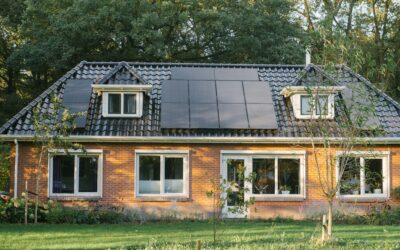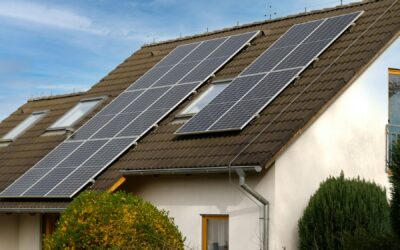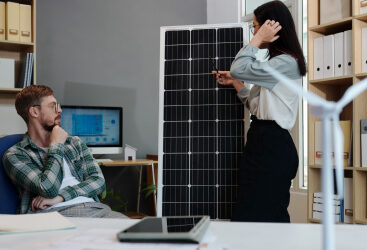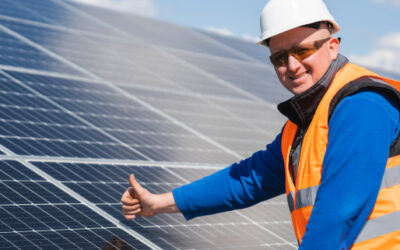Solar panels, also known as photovoltaic (PV) panels, harness sunlight to generate electricity. They are composed of many solar cells that convert sunlight into direct current (DC) electricity. This energy source is increasingly popular due to its sustainability and cost-effectiveness.
Components of a Solar Panel System
A typical solar panel system includes several key components:
- Solar Panels: Capture sunlight and convert it into electricity.
- Inverters: Convert the DC electricity produced by the panels into alternating current (AC), which is used by most home appliances.
- Mounting Systems: Secure the panels to rooftops or other structures.
- Batteries: Optional components for storing excess energy for later use.
- Monitoring Systems: Track the performance and output of the solar system.
The Photovoltaic Effect
The photovoltaic effect is the fundamental process by which solar cells generate electricity. When sunlight strikes a solar cell, photons (light particles) knock electrons loose from atoms in the cell’s semiconductor material, typically silicon. This movement of electrons generates an electric current.
Types of Solar Panels
There are three main types of solar panels:
- Monocrystalline Panels: Made from single-crystal silicon, these panels are highly efficient and have a long lifespan.
- Polycrystalline Panels: Made from multiple silicon crystals, these panels are less efficient but more affordable.
- Thin-Film Panels: Made from various materials, these panels are flexible and lightweight but generally less efficient.
Installation Process
The installation of solar panels involves several steps:
- Site Assessment: Determine the best location and orientation for maximum sunlight exposure.
- Design and Permitting: Create a system design and obtain necessary permits.
- Installation: Mount the panels, install the inverter, and connect the system to the electrical grid or batteries.
- Inspection and Activation: Ensure the system meets all regulations and standards before activating.
Grid-Tied vs. Off-Grid Systems
- Grid-Tied Systems: Connected to the local utility grid, allowing for the exchange of energy. Excess energy can be sold back to the grid, and the grid can supply power when solar production is low.
- Off-Grid Systems: Independent of the utility grid, relying solely on solar panels and battery storage. Ideal for remote locations but typically more expensive due to the need for substantial battery capacity.
Efficiency Factors
Several factors influence the efficiency of solar panels:
- Panel Orientation and Tilt: Optimal positioning towards the sun maximizes energy capture.
- Shading: Even partial shading can significantly reduce output.
- Temperature: High temperatures can decrease panel efficiency.
- Cleanliness: Dust and debris can block sunlight, reducing performance.
Maintenance and Care
Solar panels require minimal maintenance. Regular cleaning to remove dirt and debris ensures optimal performance. Periodic inspections by a professional can help identify and resolve any issues.
Lifespan and Durability
Solar panels typically have a lifespan of 25 to 30 years. They are designed to withstand various weather conditions, including hail, wind, and snow. Most manufacturers offer warranties that guarantee performance over a specified period.
Common Issues and Troubleshooting
While solar panels are generally reliable, common issues may include:
- Shading: Addressing nearby trees or structures that cast shadows.
- Inverter Problems: Ensuring the inverter is functioning correctly, as it is a critical component.
- Wiring Issues: Inspecting and maintaining the wiring to prevent power losses.
FAQs
How much do solar panels cost? The cost varies depending on the size and type of the system. SEAI grants and other incentives can significantly reduce the initial investment.
How long does it take to install solar panels? The installation process typically takes 1 to 3 days, but the entire process, including permitting and inspection, can take several weeks.
Do solar panels work on cloudy days? Yes, but their efficiency is reduced. Solar panels can still generate electricity on cloudy days, though at a lower rate compared to sunny days.
Can I sell excess solar energy? In grid-tied systems, you can sell excess energy back to the grid, reducing your electricity bills further.
What happens during a power outage? In grid-tied systems without battery storage, the solar panels will shut down during a power outage for safety reasons. Off-grid systems with batteries can continue to provide power.
How do I maintain my solar panels? Regular cleaning and annual inspections by a professional are recommended to ensure your system operates efficiently.
Understanding how solar panels work is crucial for anyone considering making the switch to solar energy. From the photovoltaic effect to installation and maintenance, this guide covers all aspects, highlighting the benefits and potential challenges.
Investing in solar panels not only contributes to a sustainable future but also offers long-term financial benefits.






0 Comments